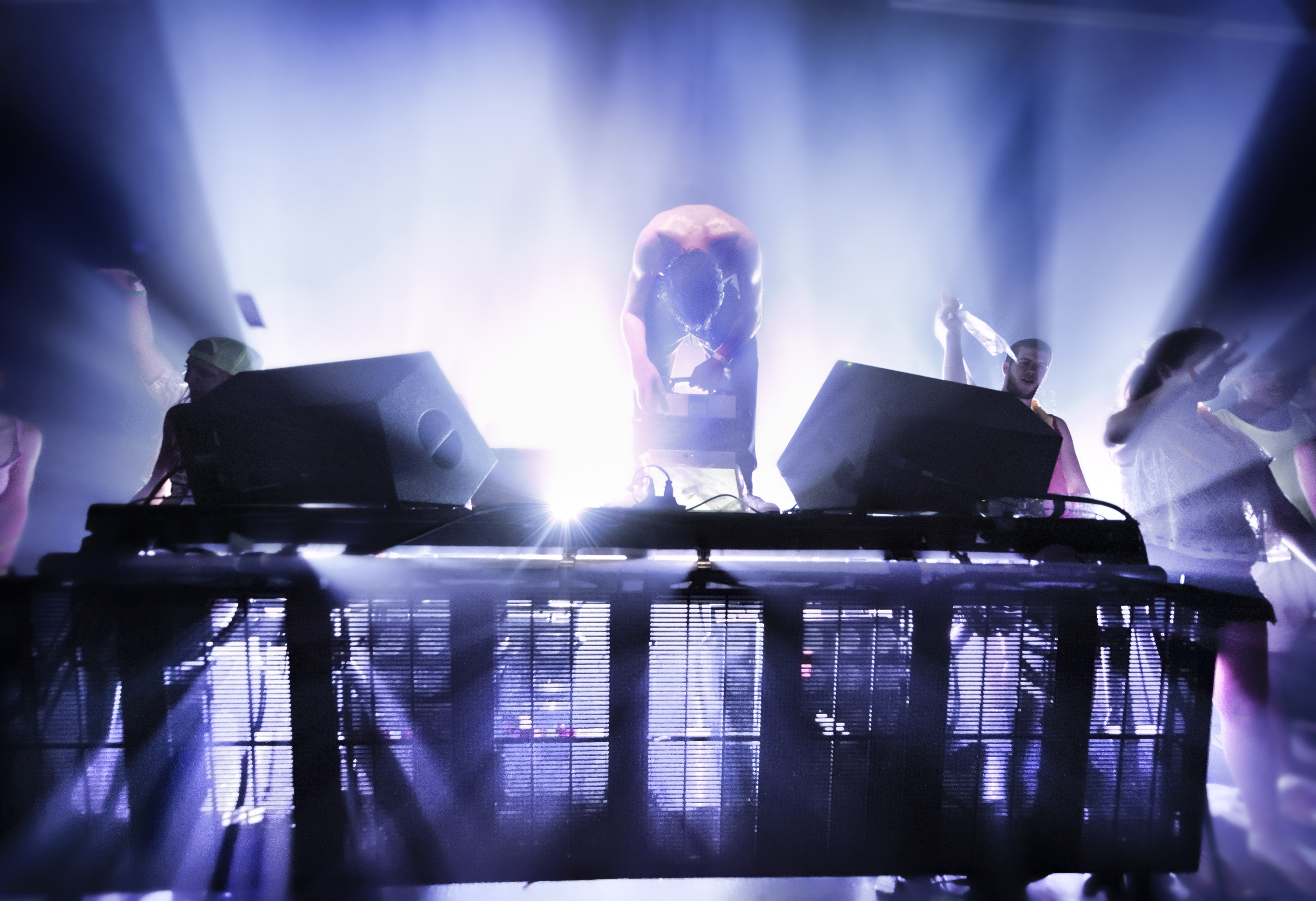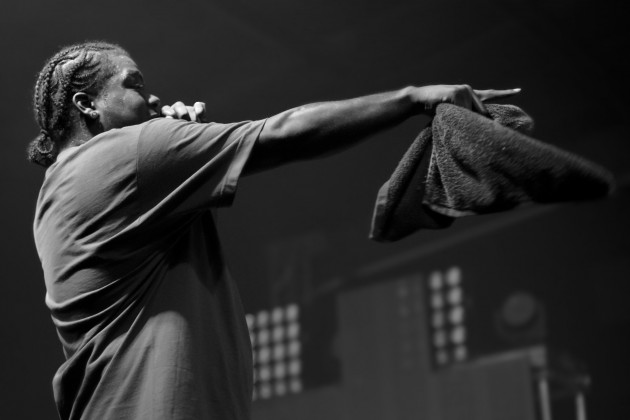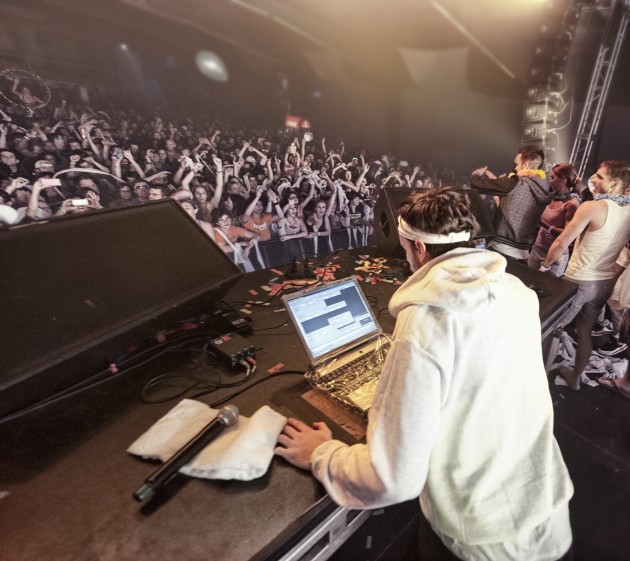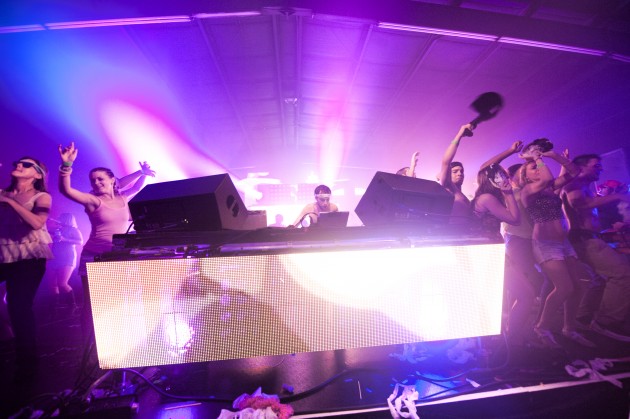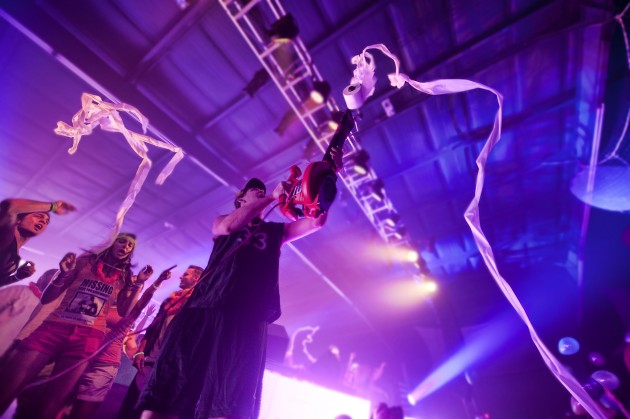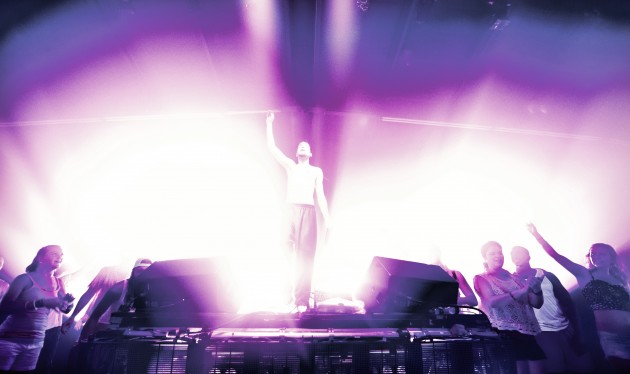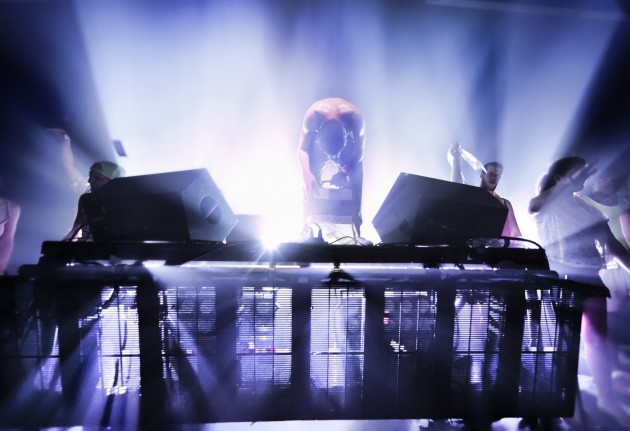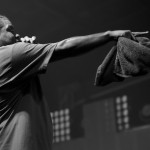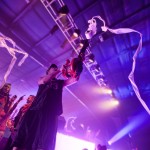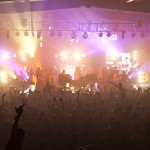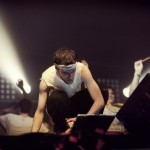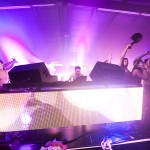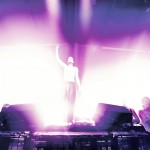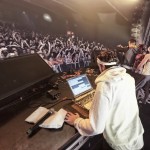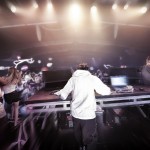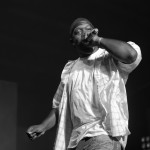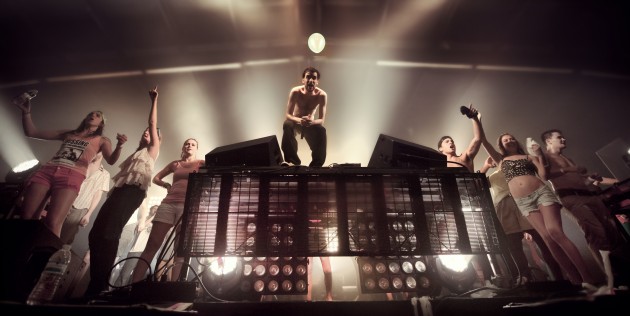
Girl Talk shows are fairly complicated affairs. For starters, you have to consider the obvious technical proficiency required on Greg Gillis’ part, as well as the generally elaborate stage and sound setup. The lights swirl around in technicolor bursts, with syncopated images that spin and distort parallel to the beats, where you’re more than likely to hear multiple chants of “Girl Talk!” rise up from the audience at any given point. He may or may not rip his shirt off, and he’ll very likely use his live setting to toy with the beats and tempos of tracks from his records. When all these aspects are working in unison, and when all the music seems to pour forth from the stage in day-glo waves, the resulting sensory overload can be awe-inspiring, mentally overwhelming even. And on a fall evening, in a radically renovated skating rink in Chattanooga, TN, Gillis was in rare form.
Opening hip-hop act Mista Out Da Frame swaggered and boasted on the low-lite stage for close to 45 minutes, amid thumping bass and a slew of repetitive beats. It worked well enough in a live setting, though it was nothing I’d actively seek out. You could tell from the crowd that any reserves of energy were being held back for Girl Talk. Though to be fair, the first few rows of fans pressed up against the stage were jumping to the beats and seemed to be having a great time. Typical songs revolved around awkward raps describing women in general (and particular audience members), the band’s Herculean output of recorded material which has gone unnoticed by major labels, and what they expect women to want to do to them in light of the band’s unrealized greatness. It would have seemed unbearably misogynistic (and came close regardless) but the music was loud and they were good performers and were able to rile the crowd up in advance of Girl Talk. So in that aspect, I guess, they accomplished their goal. They exited to a flurry of grateful cheers, the house lights came on, and the stage was quiet again.
It was obvious that a good deal of effort had been put into the setup of the stage, with amps stacked three and four high and video screens positioned strategically across the stage. It all seemed incredibly labyrinthine, with dozens of cables snaking haphazardly across the stage and techs continually running back and forth checking plugs and connections. What smoke remained from Mista Out Da Frame’s set still obscured a good chunk of the stage so that the stacks of equipment made the stage seem like a scale replica of some nameless city’s skyline at dawn. But to those of us shuffling our feet waiting for the house music to go quiet, it was a promise of things to come.
There were people lined up against the edge of the stage looking at the rigs, obviously trying to work out what each piece was going to do. I wasn’t at the edge of the stage, but I was doing the same thing. As this was the first time that I had seen Girl Talk live, my expectations could have been a bit unrealistic. But any doubts that might have entered my thoughts were quickly wiped away as the house lights dimmed and Gillis took the stage. He walked behind an ordinary table where two cellophane-wrapped laptops sat; his own personal needs were simple. He was quickly followed by about 25 people who spread out behind him, decked out in night-glo necklaces, glo sticks, and all sorts of related paraphernalia. Vivid low-cut dresses, Kanye-style flashing glasses, and pulsing light hula hoops seemed to be everywhere (I must have missed that email). After the usual introductions and his call out to Track 29 for their one-year anniversary, he ducked his head, stared at his laptop, and began.
It’s difficult to accurately describe a Girl Talk show as having “songs.” There are sounds and vaguely discernible bits and pieces of songs from the past five decades, but I can count on one hand how many times he actually stopped the music with any semblance of finality. Waves of sound poured out over the audience, who were either lost in their own chemically-induced trance or were dangerously close to popping something out of place and giving themselves whiplash. Across seemingly random repetitive scenes of distorted faces, soundless mouths talking, and Halloween-themed imagery, artists like Elton John, Kelly Clarkson, and Nirvana were twisted and chopped in a continual collage of sound and light. If you did happen to pull your scorched retinas away from the epileptic lights long enough to look at the man behind the music, you would see a skinny man, continually pulling at his shirt, face drenched in sweat, dancing along with the group of people on stage.
As far as recognizable cuts from his albums/mixtapes, there are certain parts which stick out—the Jay-Z/Radiohead smash on “Set It Off,” the Kelly Clarkson/MC Hammer mash-up on “Here’s The Thing,” and the Elton John/Notorious B.I.G. collision on “Smash Your Head”—but it seems as though Gillis is less concerned with recreating the exact samples, beats, and structures of his formal releases and instead opts for a kind of manically intuitive approach, where his synapses fire randomly and the music follows suit. At one point during a song, hundreds of balloons were dropped from the ceiling, along with two 12-foot long clear plastic inflatable…somethings. With the air blasting from industrial fans on the side of the walls, these cylindrical inflatables rolled across the top of the audience, who were almost completely unaware. Such is the enveloping nature of Gillis’ music and live experience.
There were several times when two people emerged on stage with toilet paper shooters. Air blasted from leaf blowers shot lengths of toilet paper out in the audience. Coupled with numerous doses of confetti explosions over the course of the show, there wasn’t an unadorned person in the audience.
As the show closed, Gillis jumped up on the table which held his minimal setup and called out to the audience. As the light surrounded him from the backing rigs, he seemed to radiate an unearthly glow. Once again calling out to the venue for letting him play there and to help celebrate their one-year anniversary, he was met with a roar of applause and cheers from the audience. And close to 1700 people hoped that the night wouldn’t end.
Due to the nature of the show, I didn’t expect an encore but Gillis came back onstage and provided a hell of an ending to an already amazing night of music. The night seemed more a chronicle of music itself as he ran through the last 50 years of music at a fast clip, barely standing still long enough for us to catch up. And everyone there wouldn’t have had it any other way.

